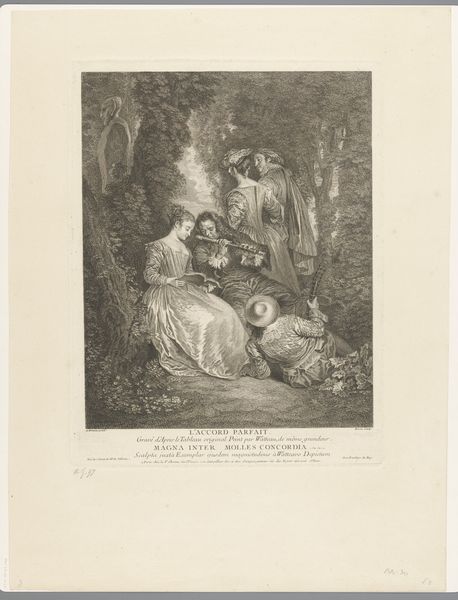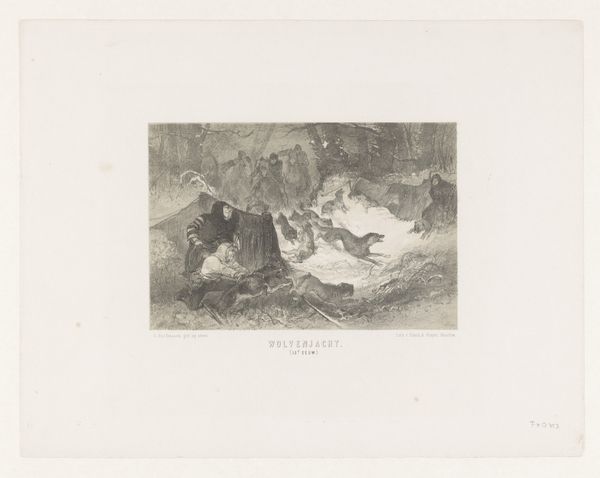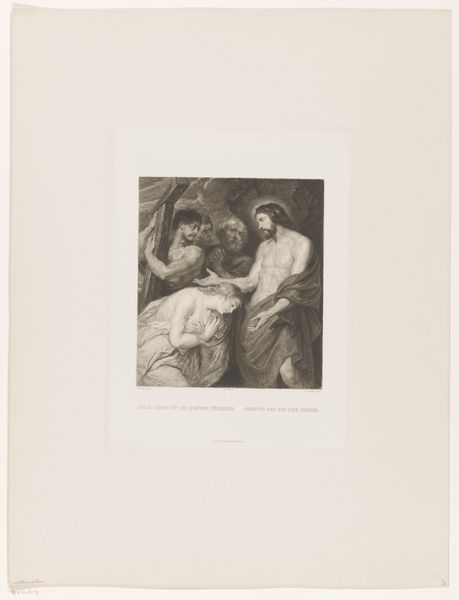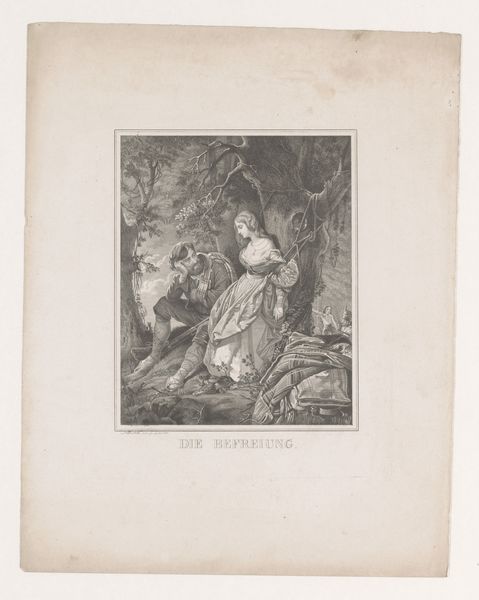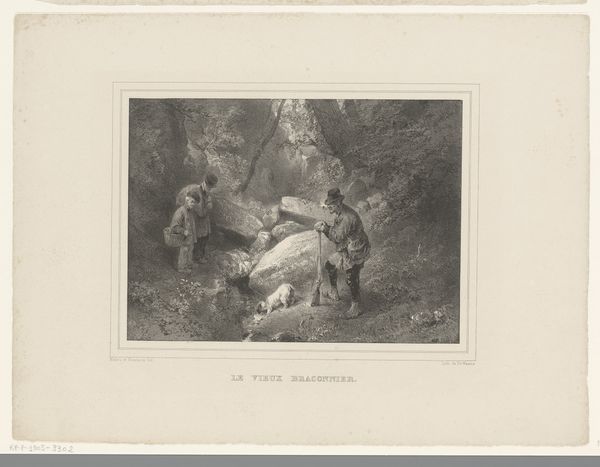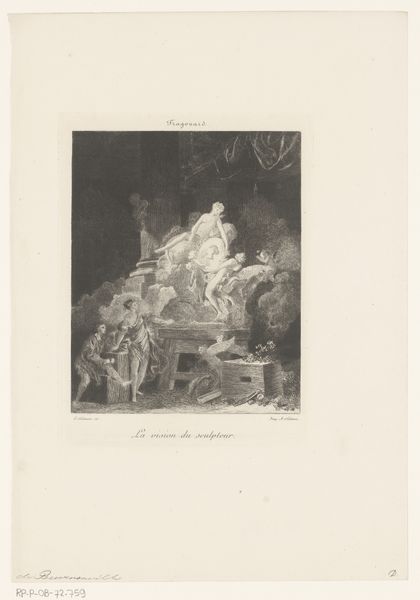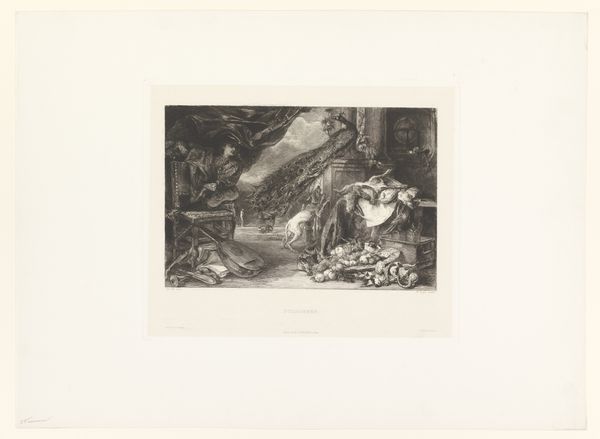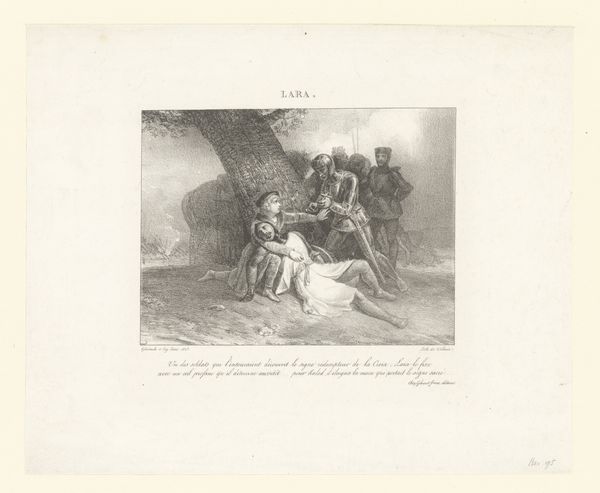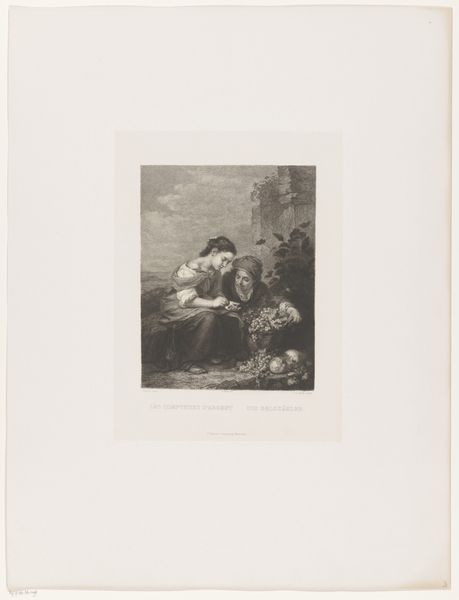
engraving
#
baroque
#
old engraving style
#
landscape
#
genre-painting
#
engraving
Dimensions: height 317 mm, width 365 mm
Copyright: Rijks Museum: Open Domain
Curator: Let's examine this engraving, "Elegant Company Making Music in a Garden," made between 1717 and 1729 after an original painting by Watteau. What do you make of it? Editor: It's charming! There's a certain lightness to the scene – people enjoying themselves in nature. The engraving itself feels very detailed, with delicate lines creating texture. What exactly am I looking at in terms of its cultural production, however? Curator: Exactly. Let’s think about this not as a unique artistic vision, but as a product. Engravings like these made Watteau accessible. It’s a reproductive medium – how does that affect its meaning and purpose? We must consider that the engraving, made by Jacques Philippe Le Bas, is functioning almost like a poster or a musical record would function today. Editor: So, it’s not just art for art's sake? The process is less about expressing the engraver’s feelings and more about expanding access? Curator: Precisely. It makes art accessible, reproducible and potentially commodifiable for a wider audience. We might then also ask: who would have been buying this print? And what might they have been hoping to gain, materially or socially, by consuming it? Editor: So it shifts the focus from the artist's individual genius to the means of distribution and consumption... Fascinating. Curator: Exactly. Thinking about the labor, the materials – even the paper itself – grounds the artwork in its historical reality. Considering the socio-economic implications transforms our understanding of the image itself. Editor: I hadn't considered how the means of production shape our understanding. Thank you! Curator: And thank you. By focusing on material conditions, we demystify art and connect it to broader systems of exchange.
Comments
No comments
Be the first to comment and join the conversation on the ultimate creative platform.
